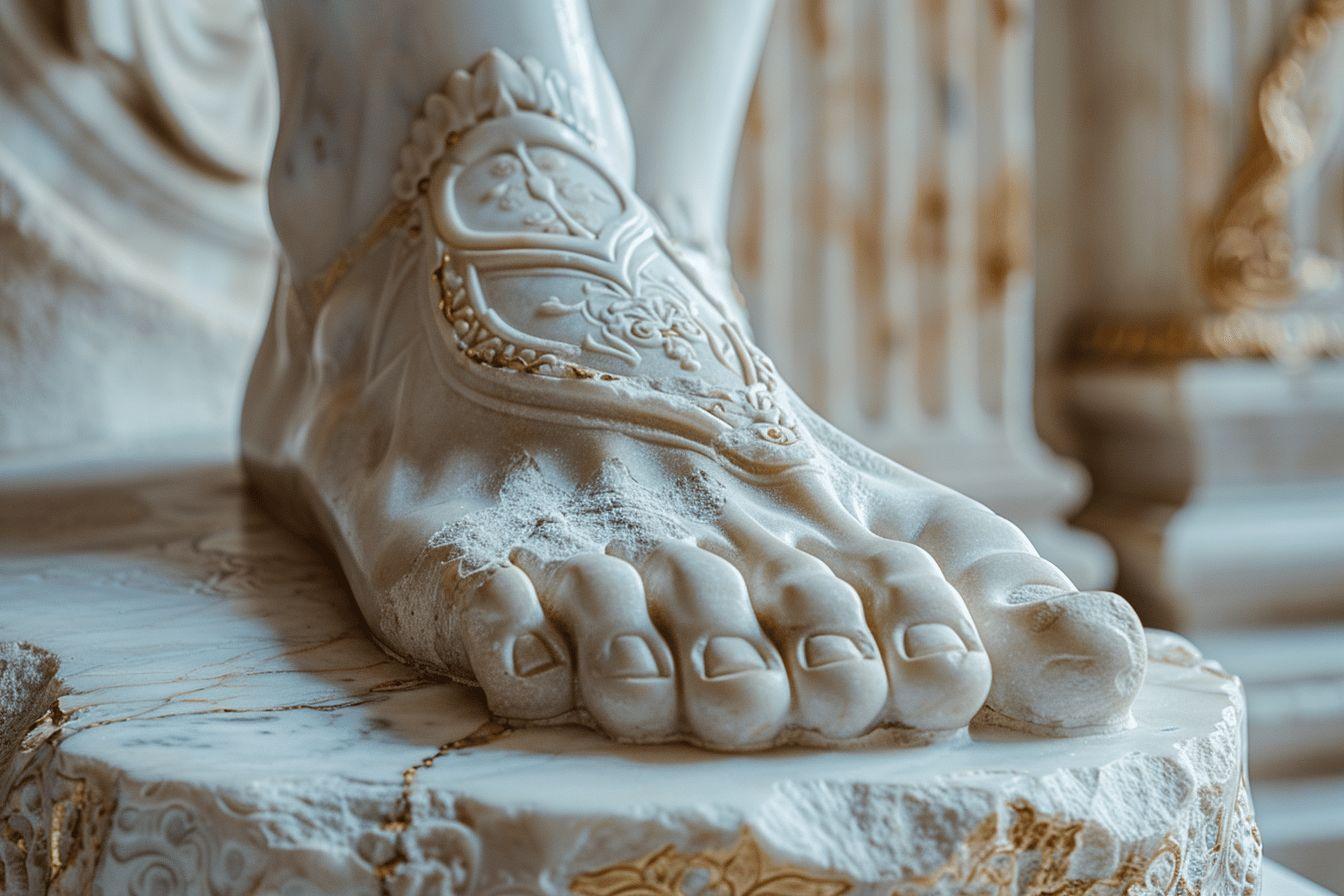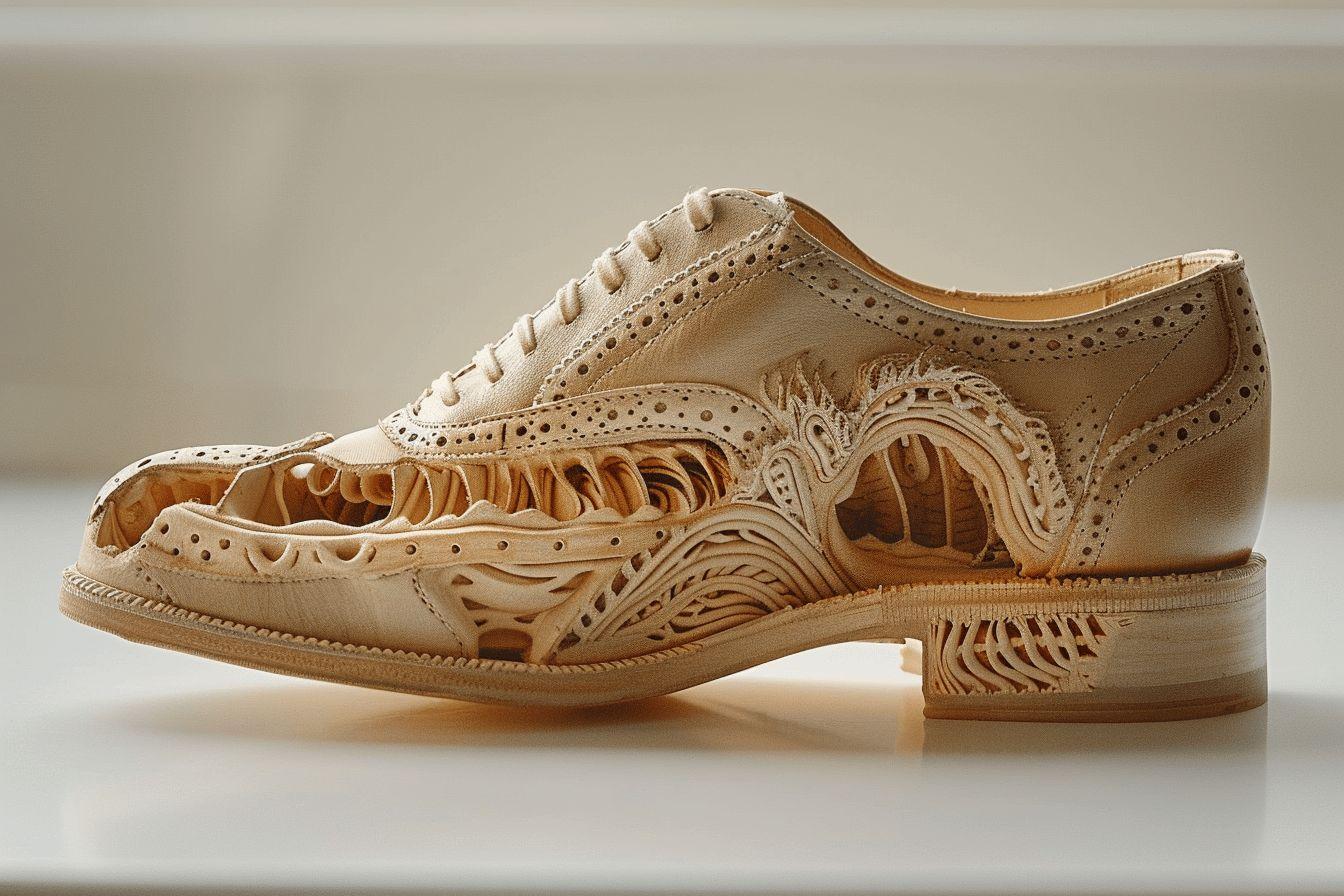Summary
Ancient Romans made significant contributions to measurements and art through their focus on feet, influencing multiple aspects of civilization.
- The standard Roman foot (29.6 cm) enabled consistent architectural planning across the empire
- Roman sculptors used feet to convey status and character, with different styles for gods versus commoners
- Ancient Romans developed sophisticated foot care practices including specialized tools and treatments
- The legacy of Roman foot measurements and artistic techniques continues to influence modern systems
The ancient Romans left an indelible mark on history through their architecture, governance systems, and cultural practices. Among their many contributions, Roman feet measurements and foot-related artistry represent fascinating elements of their civilization. From practical units of measurement to artistic representations in sculptures, Roman feet encompass a rich heritage spanning utilitarian functions and aesthetic values.
The roman foot as a measurement unit
In ancient Rome, the foot (pes) served as a fundamental unit of measurement used throughout the empire. The standard Roman foot measured approximately 29.6 centimeters (11.65 inches), slightly shorter than today's imperial foot. This measurement became standardized across vast territories, enabling consistent architectural planning and construction.
Roman surveyors and engineers relied on this measurement to create remarkably precise structures. The consistency of the Roman foot contributed significantly to the empire's ability to build standardized infrastructure across different regions. From aqueducts spanning valleys to perfectly proportioned temples, the Roman foot provided the foundation for architectural harmony.
The Roman measurement system included several units derived from the foot:
- Digitus (finger) - 1/16 of a foot
- Palmus (palm) - 1/4 of a foot
- Cubitus (cubit) - 1.5 feet
- Passus (pace) - 5 feet
- Actus (length of furrow) - 120 feet
Archaeologists have discovered bronze and wooden rulers marked with these divisions at sites throughout the former empire. These artifacts confirm the standardization efforts made by Roman authorities to maintain consistent measurements essential for trade, construction, and legal matters.
The practical applications of the Roman foot extended beyond construction. Land surveyors, known as agrimensores, used foot measurements to divide agricultural lands and establish property boundaries. This systematic approach to measurement facilitated accurate taxation and property registration throughout the empire.

Representation of feet in roman sculpture
Beyond their practical measurement applications, feet held significant artistic importance in Roman sculpture. The accurate depiction of feet in Roman statuary demonstrates the remarkable anatomical knowledge possessed by ancient sculptors. From the perfectly proportioned feet of gods to the worn, realistic feet of commoners, Roman artists captured incredible detail in their work.
Roman sculptors often used feet to convey status and character. Divine figures typically featured idealized, perfectly proportioned feet with high arches and elegant toes. In contrast, representations of everyday citizens might include more realistic details like calluses or even foot conditions common in the ancient world.
| Foot Type in Sculpture | Symbolic Meaning | Common Examples |
|---|---|---|
| Idealized feet | Divine perfection, heroic status | Jupiter, Apollo, emperors portrayed as gods |
| Naturalistic feet | Human reality, mortality | Portrait busts of citizens, sarcophagi |
| Damaged/deformed feet | Character flaws, divine punishment | Mythological figures under curse |
The famous marble sculpture of the "Dying Gaul" exemplifies the Roman attention to foot detail. The warrior's feet, with their realistic musculature and position, convey his suffering and imminent death. Similarly, the portrayal of foot tension and arch positioning provides insight into Roman understanding of human anatomy.
Interestingly, Roman sculptors occasionally depicted foot conditions in their works. Modern podiatrists have identified representations of bunions, hammertoes, and other foot ailments in ancient sculptures, offering a glimpse into the medical challenges faced by ancient Romans.
Roman foot care and podiatric practices
The Romans placed considerable importance on foot health and hygiene. Public baths included areas specifically for foot washing and care, while wealthy households employed slaves dedicated to foot maintenance. Roman medical writers documented numerous foot ailments and their treatments, many of which parallel modern podiatric approaches.
Corn and callus removal tools discovered in archaeological excavations resemble modern podiatric instruments. Roman physicians developed treatments for various foot conditions, including:
- Herbal poultices for inflammation and pain
- Specialized sandals for foot deformities
- Surgical procedures for severe conditions
- Therapeutic foot soaks with medicinal ingredients
The writings of Celsus, a first-century Roman medical encyclopedist, contain detailed descriptions of foot surgeries and treatments. His work provides evidence that Romans understood the importance of proper foot care for overall health and mobility.
Some Roman therapeutic approaches bear striking resemblance to modern treatments. Pressure point therapy, similar to modern reflexology techniques for plantar fasciitis, appears in Roman medical texts. They also recognized the connection between proper footwear and foot health, with differentiated shoes for various activities and conditions.
The legacy of roman feet in modern times
The influence of Roman feet extends into modern times through both measurement systems and artistic traditions. While most countries have moved to metric measurements, the concept of the foot as a standard unit persists in several cultures, particularly in the United States and United Kingdom.
In art education, the study of classical Roman foot proportions and positioning remains fundamental. Artists learning figurative sculpture or drawing still reference Roman models to understand anatomical relationships and weight distribution. The Roman artistic legacy continues to shape how we perceive and create human figures.
Archaeological discoveries continue to enhance our understanding of Roman foot practices. Recent excavations at Roman military sites have unearthed special sandals designed for specific terrain types, demonstrating sophisticated knowledge of ergonomics. These findings illuminate the practical approaches Romans took to foot care during military campaigns across diverse landscapes.
Modern podiatric medicine owes much to Roman innovations. Their early understanding of foot biomechanics, treatment of conditions, and recognition of the foot's importance to overall health established foundations that evolved into contemporary practice. The detailed documentation of foot conditions by Roman physicians provided valuable historical baseline data for the development of modern podiatry.




Leave a comment
This site is protected by hCaptcha and the hCaptcha Privacy Policy and Terms of Service apply.